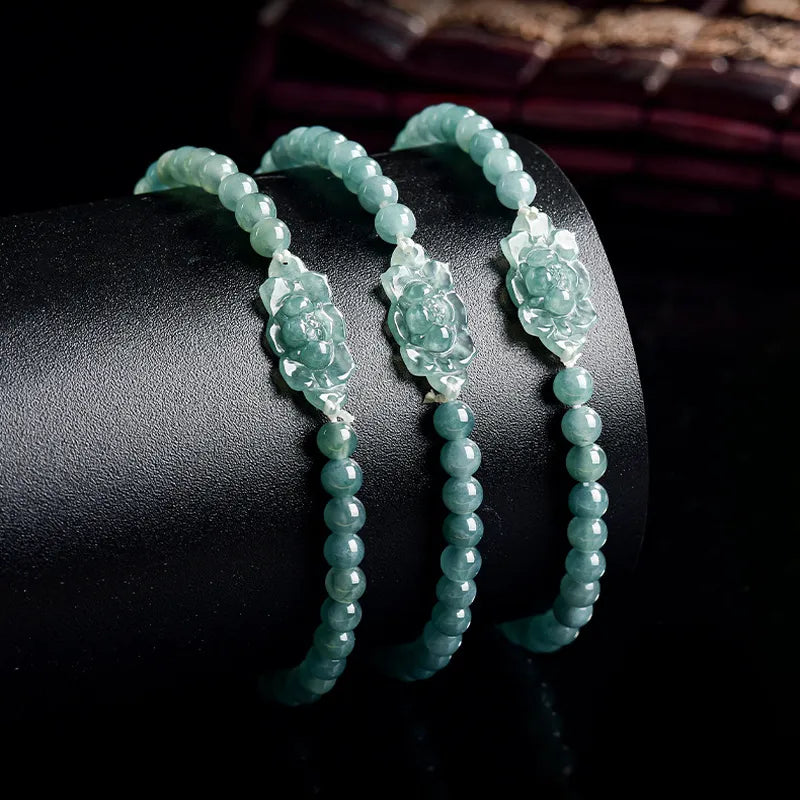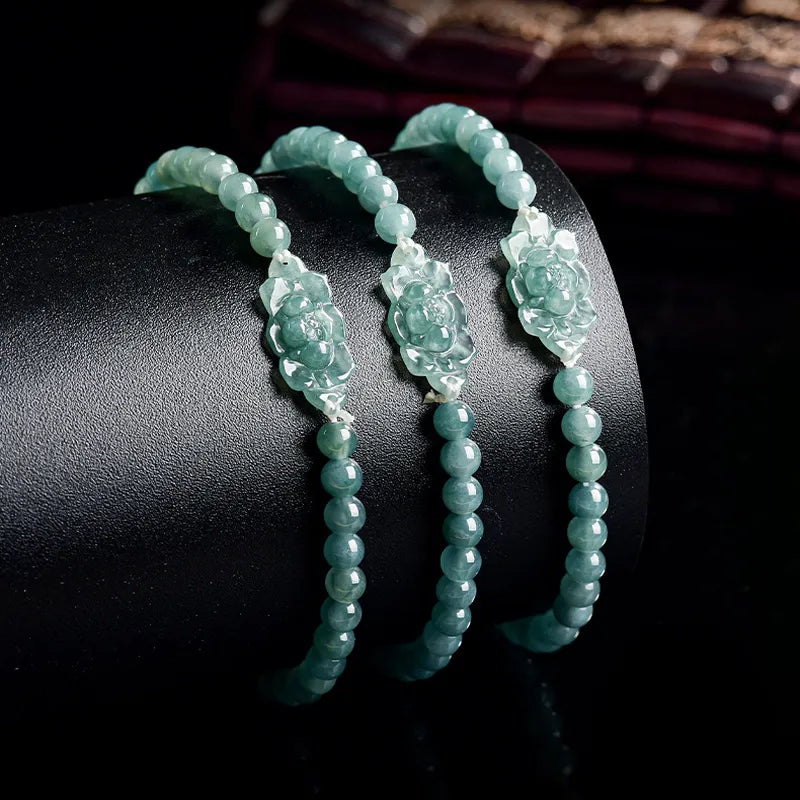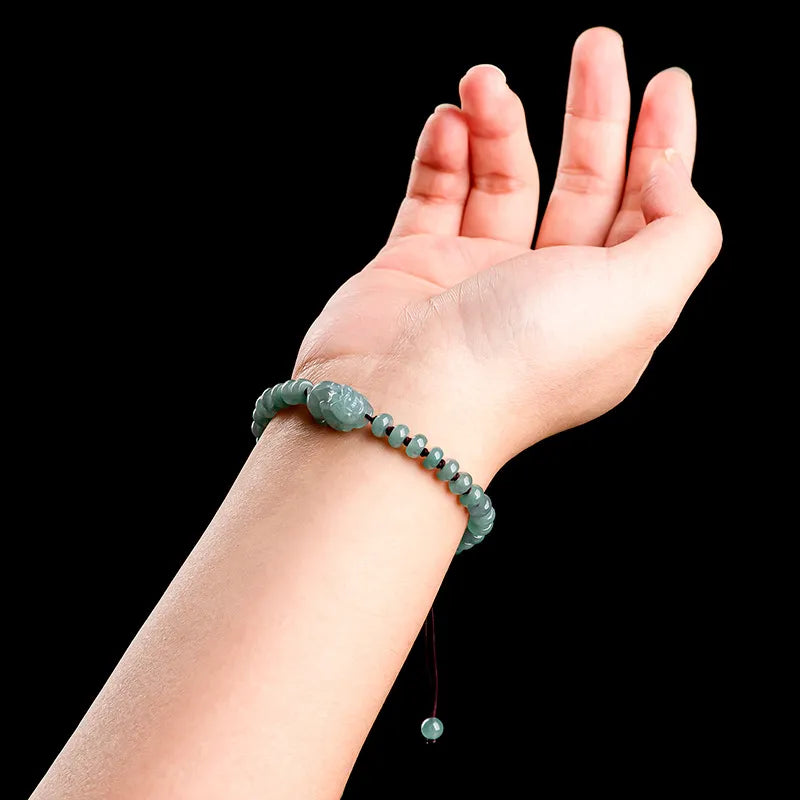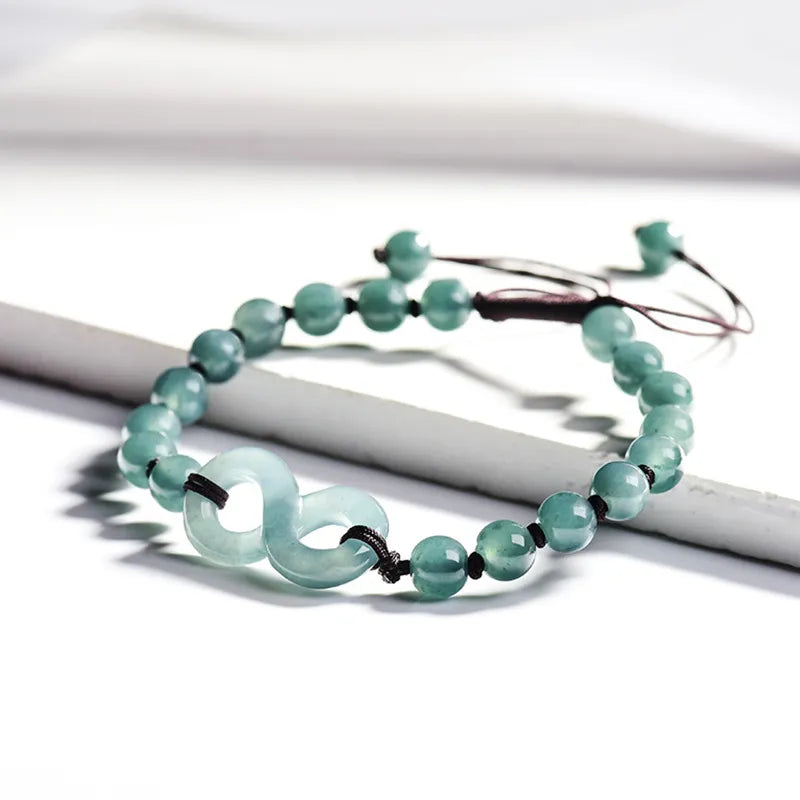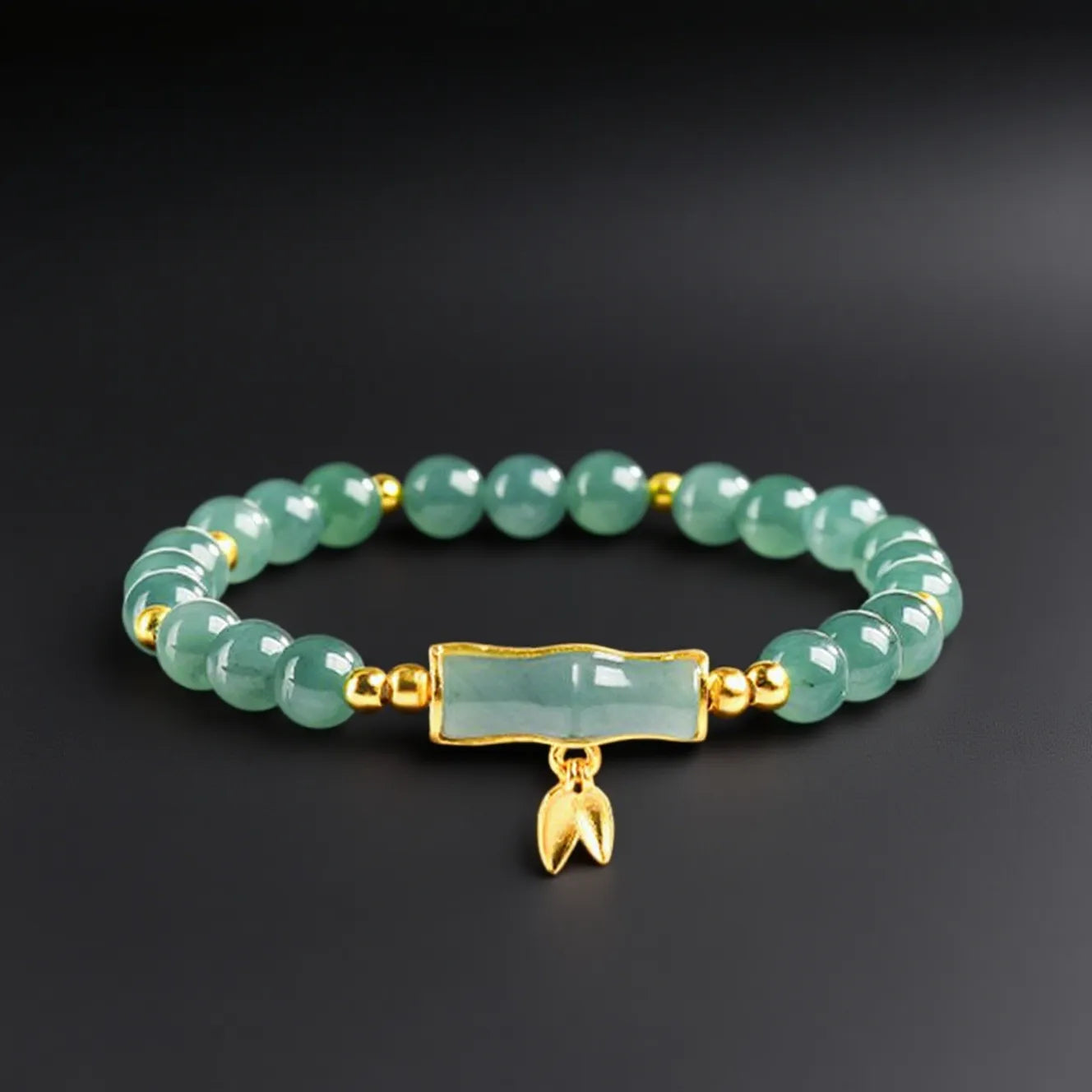How to Choose a Jade Bangle for Optimal Wearing Comfort: A Practical Guide
Selecting a jade bangle that balances aesthetic appeal with physical comfort requires attention to anatomical, material, and design factors. Below are key considerations to ensure your choice aligns with daily wearability and long-term satisfaction.
1. S: The Foundation of Comfort
A jade bangle’s inner diameter must align with your wrist’s unique proportions to prevent discomfort.
- Anatomical Fit: Measure your wrist’s circumference at its narrowest point using a flexible tape or string. Add 1–2mm to this measurement for a snug yet non-restrictive fit. For example, a 58mm wrist circumference typically suits a 60mm bangle.
- Flexibility and Bone Structure: Individuals with rigid wrist bones or larger joints may need slightly looser fits to avoid resistance during donning. Conversely, those with softer wrists can opt for closer tolerances.
- Activity Level: If you engage in frequent hand movements (e.g., typing, gardening), prioritize a bangle that stays secure without shifting. A 1–2mm gap between the bangle and wrist skin ensures stability.
Pro Tip: Test sizing by sliding the bangle over your hand’s widest point (usually the thumb joint). It should pass with gentle pressure but not require force.

2. Material and Structural Integrity
The jade’s physical properties directly impact comfort and durability.
- Density and Hardness: High-density jade (e.g., nephrite or fine jadeite) resists chipping and wears smoothly against the skin. Avoid materials with visible inclusions or fractures, as these may irritate the wrist over time.
- Surface Finish: Polished jade with a glass-like luster reduces friction, while matte finishes may feel rougher. Run your fingertips along the inner and outer edges to check for sharpness.
- Thermal Conductivity: Jade remains cool to the touch, which some wearers find soothing. However, in cold climates, a thicker bangle may retain warmth better than ultra-thin designs.
Did You Know? Jade’s rigidity means it doesn’t conform to the wrist like metal or silicone. Opt for rounded edges (e.g., “oval” or “D-shape” profiles) to minimize pressure points.
3. Design and Weight Distribution
The bangle’s shape and mass influence how it feels during extended wear.
-
Profile Types:
- Classic Round: Timeless but may rotate frequently on slender wrists.
- Flat/Safety Style: Inner flat surface sits closer to the wrist, reducing movement. Ideal for active lifestyles.
- Egg-Shaped (Oval): Elongated design conforms better to oval wrists, distributing weight evenly.
- Width and Thickness: Narrow bangles (4–6mm) are lightweight and stackable, while wider ones (8–12mm) offer a bolder look but may feel heavy. Balance aesthetics with practicality—a 7mm width often strikes a middle ground.
- Symmetry: Uneven thickness or lopsided carving can create hotspots. Inspect the bangle under natural light to ensure consistent dimensions.
Real-World Insight: A 2024 survey of jade enthusiasts revealed that 68% prefer flat-profile bangles for daily wear due to their stability, while 22% opt for round profiles for ceremonial use.
4. Climate and Seasonal Adaptability
Environmental factors affect how a jade bangle interacts with your skin.
- Temperature Sensitivity: Jade contracts slightly in cold weather, which may tighten the fit. If you live in a region with extreme seasons, consider a bangle with 0.5–1mm extra room for winter.
- Humidity: In humid climates, skin swelling can make a bangle feel tighter. A removable sizing bead (if the design allows) or a half-size larger bangle can mitigate this.
- Sleep Wear: Some cultures traditionally wear jade bangles overnight for spiritual reasons. If you plan to do so, choose a looser fit to accommodate natural wrist expansion during sleep.
Expert Advice: Jade’s low thermal expansion means it won’t loosen significantly in heat, unlike metal. Prioritize breathability by avoiding overly thick designs in hot climates.
Final Thoughts: Prioritize Function Over Trends
While intricate carvings or vibrant hues may tempt you, prioritize comfort metrics like sizing accuracy, material purity, and ergonomic design. A well-fitted jade bangle should feel like a natural extension of your arm—visible yet unobtrusive. When in doubt, consult a gemologist to verify structural soundness before purchasing.
By aligning these factors with your lifestyle and anatomy, you’ll ensure your jade bangle remains a cherished accessory rather than a cumbersome obligation.
